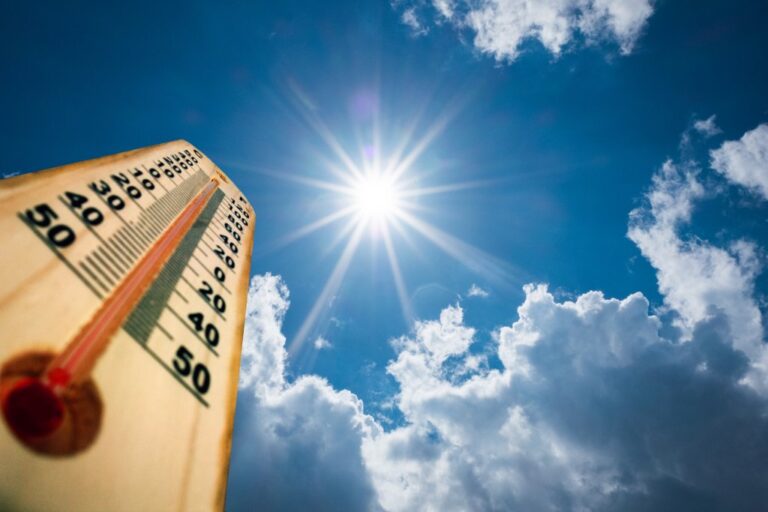It just came out Fifth National Climate Assessment contains some gloomy predictions for the future climate trajectory of the Midwest and the country as a whole. Temperatures are rising, environments are degrading and the world we once knew is evolving into something very different.
The report also contains many graphs, and in many cases these graphs paint the picture of climate change more vividly than the extensive text of the report. Here are some of our favorites.
Spring thaws occur earlier

The graph on the left shows the trend in late spring freeze and frost dates for Leelanau County, Michigan. In the 1950s, for example, you could expect the last day of 32-degree temperatures to occur in the second half of May. Now, though, it tends to happen at the beginning of the month.
The map at right shows the trend for all counties in the Midwest since 1950. Although there are exceptions, most counties are seeing the growing season start several days earlier than before.
The Midwestern Regional Climate Center has one online tool you can use it to see how growing seasons have changed in your county.
Lyme disease on the way

This chart illustrates the dramatic increase in Lyme disease cases in the Midwest since 2000. Back then there were typically between 1,000 and 1,500 Lyme cases in the region in any given year. Now it's usually over 5,000.
Rising temperatures and rainfall, along with milder winters and changes in land use, have conspired to make the region a more hospitable habitat for ticks that harbor the disease. Forecasts indicate that this trend will continue.
Heated waters

Since 1980, summer surface water temperatures have increased by nearly 5 degrees Fahrenheit in Lake Superior and Lake Huron, and by a slightly smaller amount in Lake Michigan and Lake Erie. These increased temperatures help lower water levels by increasing evaporation rates and cause lake ice to form later in the winter.
Overall, “the Great Lakes are frozen for eight to 46 fewer days now than they were in the early 1970s.” says the Environmental Protection Agency. This creates a more hospitable environment for invasive species such as zebra musselsthat too encourages the growth of certain types of bacteria and algae which can be harmful to humans and wildlife.
Flood. Drought. Repeat.

These maps illustrate the annual frequency of transition between extreme wet and dry periods in the present (left map) and under various climate scenarios. The short version of this story is that the hotter it gets, the faster these transitions will occur.
This will wreak havoc not only on the natural environment, but also on the human landscape. Fields and cities will flood more often and will also be subject to more droughts. Crop yields will fluctuate more from year to year, and municipalities will be saddled with huge bills to cover flood mitigation and cleanup. Wells will dry up and water shortages will become more frequent.
More runoff

Runoff—a measure of the movement of water above and below the surface throughout the year—is expected to increase significantly in the coming decades, especially during winter. This will cause some of the flooding mentioned above. It will also carry more pollutants from agricultural operations deep into the groundwater, where they will be able to poison more drinking water wells.
The net result, according to the report: “increased pressures on ecosystems, the built environment, natural and water resources, and agriculture.”

